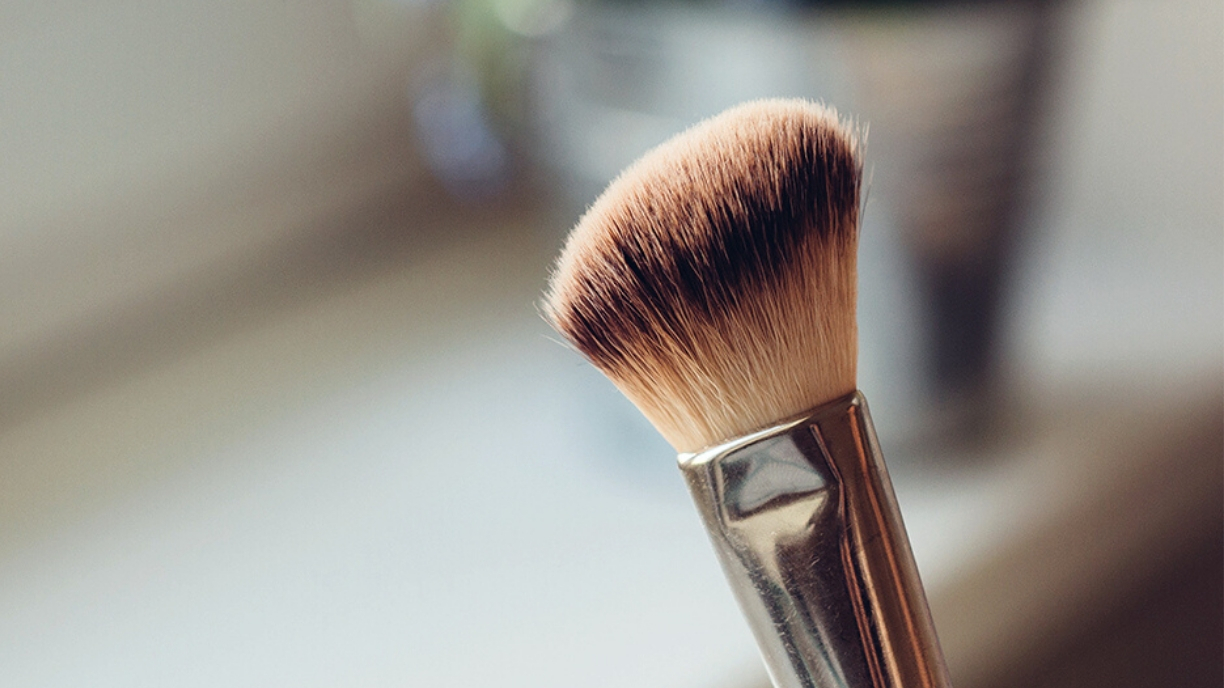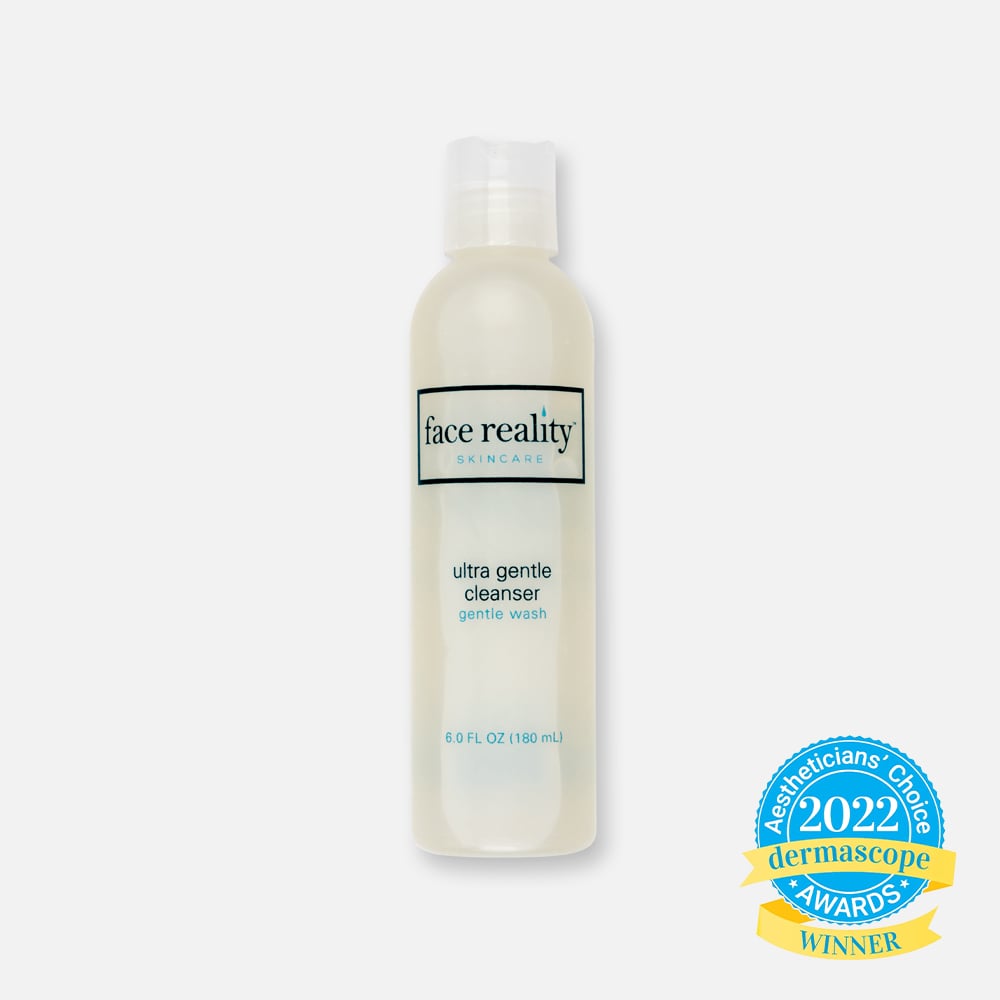
Pimples tend to manifest themselves at the worst times. More often than not, it’s just one pesky spot or a few minor blemishes. But what about all those tiny bumps that won’t go away? You do everything right; you cleanse, exfoliate, and moisturize daily. Yet every morning, you wake up with the same rough texture. At this point, you think you’ve exhausted all other options, and you resort to covering it up with foundation and concealer. Unfortunately, this is likely a mistake that spells disaster for your skin.
Most people don’t realize your makeup could be the reason your skin is struggling, we refer to this as acne cosmetica. For anyone unfamiliar with this form of acne, this blog post will answer all your questions and more.
WHAT IS ACNE COSMETICA?
Acne Cosmetica happens when your pores get clogged by heavy and often irritating ingredients found in makeup and skincare products. While makeup is usually the worst offender, this can be associated with any product applied to the face or surrounding areas. Think hair products, foundation, and even some of your favorite skincare products.
Even if you’ve never been blemish-prone before, you may find yourself plagued by Acne Cosmetica. This type of acne can affect everyone, regardless of age or gender. The worst part is that, if you’re in the know, it is hard to determine the source of your breakouts! This means you can continue using those breakout-causing products without even being aware of it. So how can you tell if you’re experiencing Acne Cosmetica? Well, it can be difficult to determine exactly, but there are a few key symptoms to watch out for.
Symptoms of Acne Cosmetica
- Tiny itchy or rash-like bumps or pustules on your face
- Bumps and blackheads most common on the cheeks, chin, and/or forehead
- Localized breakouts around areas of the face where you tend to use a specific product. This can be where you apply your blush, bronzer, or maybe around your mouth where you apply your lipstick or lip balm.
- Breakouts along your hairline can also occur as a result of your haircare products. Psst… we carry an amazing line of acne-safe hair products.
This type of acne can be exasperating, as it can take time to recognize which product might be causing the irritation. This is why it is essential to know exactly which ingredients to avoid. Acne caused by these ingredients can take weeks to form, making it very difficult to link your breakouts to the correlating products, thus leading to that endless cycle of covering those pimples with the very elements that put them there.
However, it is crucial to know that there are other contributing factors to acne cosmetica. So, while you might have mastered your products and their ingredients, certain simple habits may contribute to skin irritation and breakouts.
How To Avoid Acne Cosmetica?
Just as there are many causes for acne, there are many ways to clear it. Something as simple as changing your pillowcase more often can be enough. Below, I’ll take you through the top things to keep in mind.
KNOW YOUR INGREDIENTS
Reading the labels on your products before applying anything to your skin is one of the best things you can do to prevent breakouts. It is vital to understand what ingredients are causing these breakouts so you can determine which formulations to avoid. I know that sounds intimidating, but don’t worry. AOS makes shopping for acne-friendly products easy by labeling all of our products with acne-safe badges. We also have a list of pore-clogging ingredients so you can double-check all your products at home. With time and experience, you’ll become a pro at understanding your ingredient lists.
MAKE SURE YOU KEEP IT CLEAN
Okay, take a moment to think about the last time you washed your makeup brushes. What about your pillowcase? Odds are, you’re waiting too long in between washes, and that’s when bacteria gets the chance to flourish. It’s best to wash your makeup brushes at least once a week.
You can do this by using an oil-based cleanser, like Michele Corley Pore Clearing Cleansing Oil. You can use any oil of your choice, but be sure to check that it is acne safe. You’ll want to avoid things like olive oil and coconut oil (I know we all love coconut oil, but let’s try to keep it away from our face!) as they clog pores and trigger acne. Sunflower seed oil is a far better option for facial use. Follow up with a gentle, acne-safe cleanser to remove all the excess dirt and oil. Face Reality Ultra Gentle Cleanser is an excellent option for sensitive skin. You can even use Seen Shampoo to clean your brushes! Their formula is mild and, you guessed it, acne-safe.
Try doing this, as well as changing your pillowcases at least once a week. If you are able, silk pillowcases are more gentle on acne-prone skin than cotton or linen. Remember, acne takes weeks to develop, so it’s important to stick with a new routine long enough to see possible results.
GO TO BED WITH A CLEAN SLATE
Look, you might think that going to bed with makeup on has no long-term consequences. Sadly, that is not the case. Even if you wake up the next day spot-free, you aren’t in the clear yet. As I’ve mentioned, most people don’t know that pimples can actually take 3-4 weeks to form. So even if you don’t wake up with a spot right away, you most likely have one developing without your knowledge.
This is why knowing how to wash your face the right way can be a game-changer. It’s pretty straightforward, right? Splash some water and cleanser on your face and massage them in until your face is squeaky clean. Well, it might surprise you to know there is a “correct” way to wash your face. If you want to read about this more in-depth check out our blog here.
If you’re wearing makeup, you’ll want to be sure to do a double cleanse. You can do this by using an oil cleanser, such as Michele Corley Pore Clearing Cleansing Oil, followed by a foaming cleanser of your choice.
SWITCH TO AN ACNE-SAFE MAKEUP
No one likes getting stuck in the cycle of covering breakouts with foundation and concealer only to wake up the next day with more spots than before. Maybe you’re even sticking to a routine, washing your face twice daily, and removing all your makeup before bed, but you still can’t clear your skin. If this is the case, your makeup is likely the culprit. Luckily, it’s easier than ever to find a more suitable makeup formula for your skin.
Ideally, you’ll want to find an acne-safe makeup that won’t clog your pores. As I’ve mentioned previously, knowing your ingredients can benefit you greatly, as this will make it easier to pick out non-comedogenic formulas. Generally, powdered mineral makeup is less likely to cause breakouts. However, as long as you’re checking the ingredients, you’ll be able to find an acne-safe option in any formula. If you’re not sure where to start, we have a fantastic selection of acne-safe makeup that won’t clog your pores.
LISTEN TO WHAT YOUR SKIN NEEDS
At the end of the day, you might not need a miracle product to clear your breakouts. More often than not, you just need to understand your skin and know which products to avoid.
In addition, try not to introduce more than one new product to your routine at a time. Overloading your skin with new elements can cause stress and irritation, and make it more difficult to determine which products are actually benefitting you.
Above all, no matter how healthy your skin is, always wear sunscreen. SPF is necessary whether you’re going outside or not.
Hopefully, this article has given you some insight into clearing your stubborn acne. However, If you find that you’re still struggling with breakouts, we have a wonderful Acne Coaching program.
You can also refer to all of our Acne Lessons here to further educate yourself.


